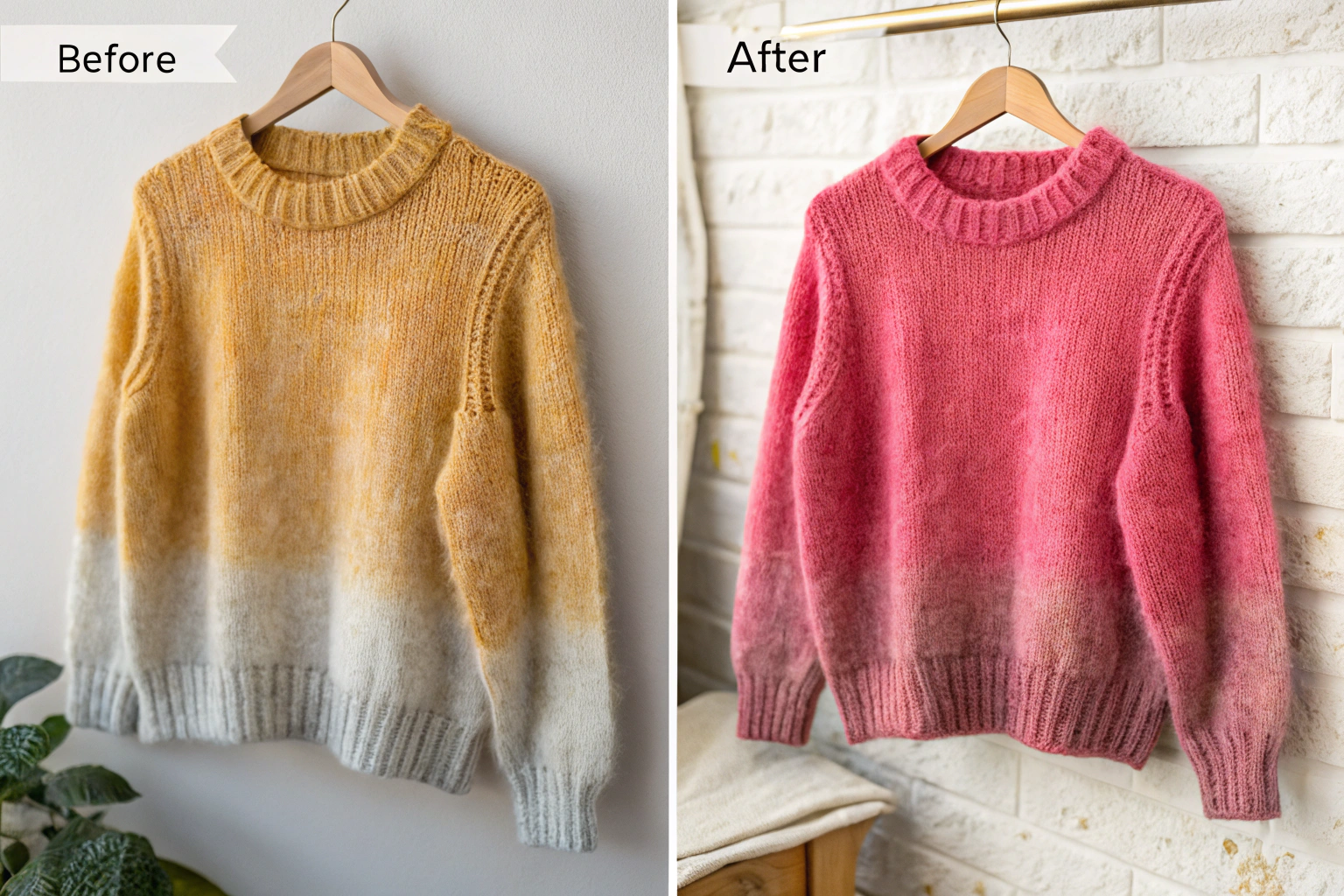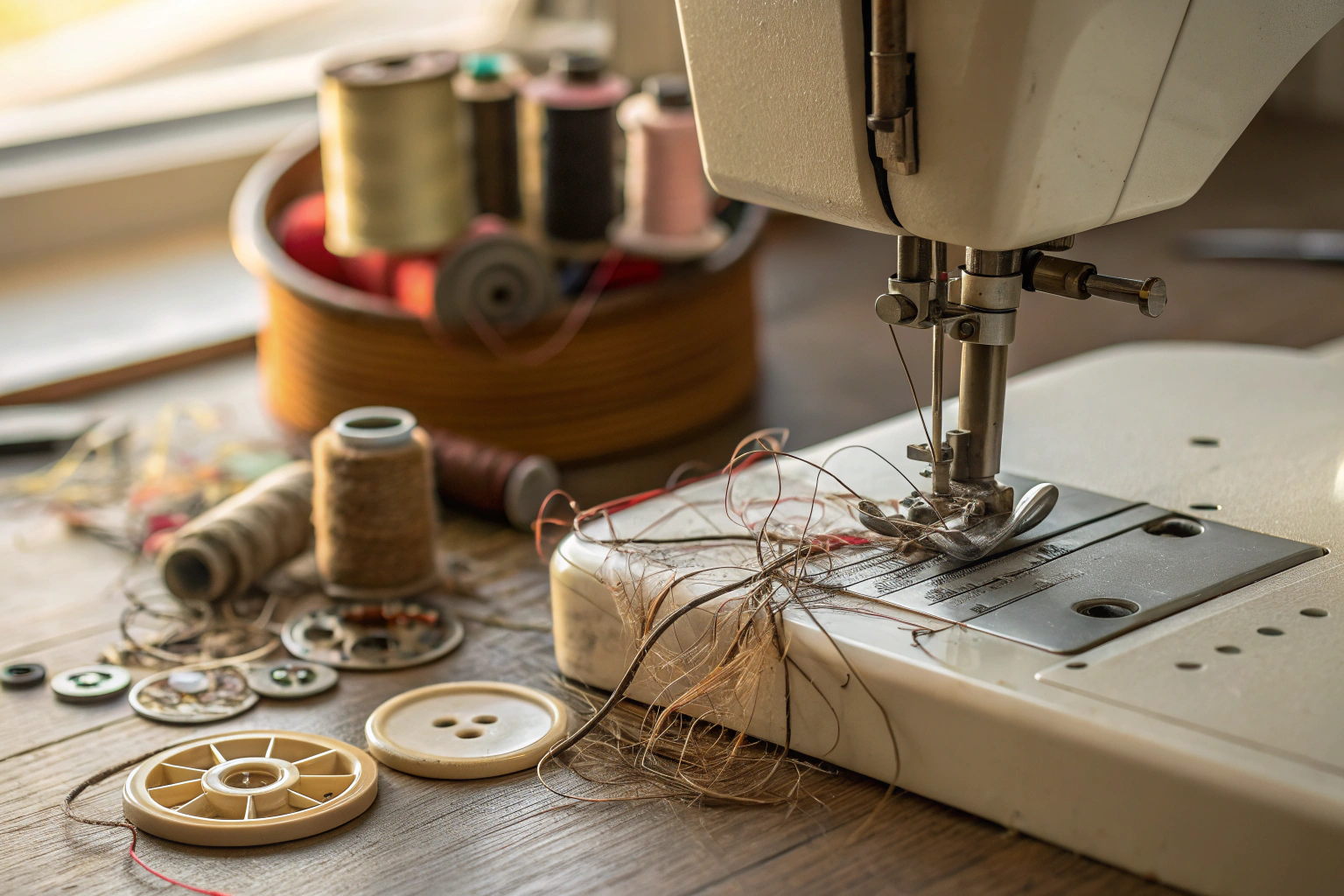Understanding the 5 mistakes when washing knitted items – and how to avoid them is essential for protecting your garments from damage. Improper washing can quickly lead to irreversible shrinking, felting, and stretching, especially with natural fibers like wool or cashmere. These common errors often stem from using the wrong water temperature, agitation level, or drying method. By learning correct care techniques, you can keep your cozy sweaters and handmade accessories looking and feeling new for years to come.
Key Benefits at a Glance
- Prevent Irreversible Damage: Avoid common problems like shrinking, felting, and yarn breakage by using the correct water temperature and gentle handling.
- Maintain Garment Shape: Ensure your sweaters and accessories keep their original size and structure by avoiding harsh machine cycles and improper drying.
- Preserve Softness & Color: Use pH-neutral wool washes and proper rinsing techniques to keep fibers soft to the touch and prevent colors from fading.
- Extend Garment Lifespan: Proper care significantly prolongs the life of your knitted items, turning them into long-lasting pieces in your wardrobe.
- Save Time & Money: Avoid the cost and frustration of replacing ruined garments by mastering a simple, effective hand-washing or machine-washing routine.
Purpose of this guide
This guide is designed for anyone who owns knitted clothes, from handmade project creators to owners of delicate store-bought sweaters. Its purpose is to solve the universal anxiety of washing cherished items by clearly outlining what not to do. You will learn to identify the five most common washing mistakes—such as using the wrong detergent, wringing out water, or hanging items to dry—and gain actionable solutions for each. This guide provides a clear framework to help you clean knits confidently, avoid costly errors, and ensure your garments remain soft, well-shaped, and beautiful for years.
Introduction: Why proper washing matters for knitted items
There’s nothing quite like the heartbreak of pulling a beloved sweater from the washing machine only to find it’s transformed into something that would fit a toddler. I learned this lesson the hard way with my grandmother’s hand-knitted cardigan – a piece I treasured not just for its beauty, but for the love and countless hours she’d invested in every stitch. One careless wash in hot water with regular detergent, and decades of craftsmanship were reduced to a felted, unwearable memory.
The emotional and financial investment in knitted items makes proper care absolutely essential. Whether you’ve spent months creating a complex cable sweater or invested in a luxurious cashmere piece, understanding how to wash and maintain these garments properly is the difference between items that last decades and expensive mistakes. Through years of trial and error – and yes, some painful losses – I’ve learned that with the right knowledge and techniques, you can keep your knitted treasures looking beautiful for years to come.
- Using harsh detergents on delicate fibers
- Washing at the wrong temperature
- Improper agitation and handling
- Incorrect drying methods
- Improper storage after washing
Understanding your knitted item’s needs before washing
Before any knitted item touches water, I always take time to understand exactly what I’m working with. Over the years, I’ve developed what I call my “fiber sense” – the ability to identify different yarn types through touch, appearance, and behavior. This skill has saved countless garments from inappropriate washing methods that could have ruined them permanently.
The first step in my examination process involves checking for any remaining tags or labels that might indicate fiber content. However, many handmade items and vintage pieces lack this crucial information. When labels are missing, I rely on tactile clues: wool feels springy and slightly rough, cotton is smooth and cool to the touch, and acrylic has a distinctly synthetic feel that’s often accompanied by a subtle sheen.
For items where I’m genuinely uncertain about fiber content, I follow my golden rule: treat it as the most delicate fiber possible. This conservative approach has prevented more disasters than I can count. I’d rather overwash gently than risk destroying an item with aggressive treatment. When dealing with vintage or unlabeled pieces, I also perform small tests on hidden areas when possible, checking how the fiber responds to different temperatures and treatments.
| Fiber Type | Water Temperature | Detergent Type | Drying Method | Special Notes |
|---|---|---|---|---|
| Wool | Cool (30°C/86°F) | Wool wash | Flat dry | Avoid agitation |
| Cotton | Warm (40°C/104°F) | Mild detergent | Air dry or low heat | Can handle more agitation |
| Acrylic | Warm (40°C/104°F) | Regular detergent | Machine dry low | Heat-sensitive |
| Cashmere | Cool (30°C/86°F) | Wool wash | Flat dry | Extremely delicate |
| Alpaca | Cool (30°C/86°F) | Wool wash | Flat dry | Similar to wool care |
| Silk | Cool (30°C/86°F) | Silk detergent | Flat dry | Avoid direct sunlight |
Different yarn types, different care requirements
Understanding the fundamental differences between fiber types has revolutionized how I approach knit care. Protein fibers like wool, silk, alpaca, and cashmere are essentially hair – they’re made of the same basic protein structure as human hair. This means they respond to heat, pH changes, and chemical treatments much like our own hair does. Too much heat or alkaline detergent can cause permanent damage, making the fibers rough, weak, or even causing them to felt together irreversibly.
Cellulose fibers like cotton and linen, on the other hand, come from plant sources and can generally handle more aggressive treatment. They’re naturally more alkaline-tolerant and can withstand higher temperatures without structural damage. Synthetic fibers like acrylic and polyester have their own unique properties – they’re often heat-sensitive despite being durable, and they can trap odors more readily than natural fibers. In my collection, I treat my wool sweaters with the same gentle care I’d give my own hair, while my cotton pieces can handle a bit more robust washing when needed.
Deciphering care labels on knitted items
Care labels serve as my starting point, but I’ve learned to interpret them specifically for knitted items rather than following them blindly. The symbols tell a story about what the manufacturer believes the fiber can handle, but they don’t always account for the unique structure of knitted fabrics. A cotton sweater might technically be able to handle machine washing, but if it’s a delicate lace pattern or has intricate construction, I might choose to hand wash it anyway.
My personal system for remembering care symbols focuses on the most critical elements for knits: temperature (always err on the cooler side), agitation level (gentle is always better), and drying method (flat drying trumps hanging for most knits). For vintage pieces or handmade items without labels, I’ve developed a decision tree that starts with fiber identification and moves through construction assessment to determine the safest approach.
- Check for fiber content on any attached tags
- Perform a burn test on a small hidden strand if safe to do so
- Feel the texture – wool feels springy, cotton feels smooth
- Look for telltale signs like pilling patterns or sheen
- When in doubt, treat as the most delicate fiber possible
Mistake #1: Using harsh detergents on delicate fibers
Choose gentle, pH-neutral detergents specifically formulated for protein-based fibers like wool or silk. For delicate items like silk pillowcases, always use a mild wash method: How to Wash Silk Pillowcase.
Regular laundry detergents are formulated for durability and stain removal, often containing enzymes, brighteners, and alkaline ingredients that can wreak havoc on delicate fibers. I discovered this the hard way when I used my regular detergent on a beautiful alpaca scarf – the enzymes designed to break down protein stains began breaking down the protein fibers themselves, leaving the scarf feeling rough and looking dull.
The science behind this damage is actually quite straightforward. Most conventional detergents have a high pH level that’s perfect for removing dirt and oils from sturdy cotton fabrics, but this alkalinity causes protein fibers to swell and become vulnerable. The enzymes that work so well on food stains see wool and silk fibers as just another protein to break down. Brighteners and fabric softeners add another layer of problems, coating fibers and interfering with their natural properties.
Through years of experimentation, I’ve built a collection of gentle alternatives that actually clean better than harsh detergents because they work with the fiber’s natural properties rather than against them. The key is understanding that gentle doesn’t mean ineffective – it means targeted and appropriate. My wool-specific detergents remove dirt and odors while maintaining the fiber’s natural oils and structure, resulting in garments that not only stay clean but actually improve with proper care.
- Eucalan – no-rinse formula perfect for delicate wools
- Soak – gentle and effective for all natural fibers
- Baby shampoo – budget-friendly alternative for wool
- Dawn dish soap – use sparingly for oil-based stains
- Avoid fabric softeners – they coat fibers and reduce breathability
Choosing the right detergent for your knits
My detergent selection process has evolved significantly over the years, moving from expensive trial and error to a systematic approach based on fiber type and soil level. For my most precious wool pieces, I invest in specialized wool washes like Eucalan or Soak – they’re more expensive per load, but the peace of mind and superior results justify the cost. These formulations are pH-balanced for protein fibers and often include natural conditioners like lanolin that actually improve the fiber’s feel over time.
For everyday wool care and budget-conscious washing, I’ve found that high-quality baby shampoo works remarkably well. It’s designed to be gentle on protein (hair), it’s widely available, and it costs a fraction of specialty wool washes. I keep a dedicated bottle just for my knits. My homemade wool wash recipe combines castile soap, white vinegar for pH balance, and a few drops of essential oil for fragrance – it costs pennies per wash and works beautifully for routine cleaning.
| Detergent Type | Pros | Cons | Best For |
|---|---|---|---|
| Commercial wool wash | Formulated specifically for wool, convenient | More expensive | Valuable or delicate items |
| Baby shampoo | Gentle, affordable, widely available | May not remove heavy soiling | Regular maintenance washing |
| DIY wool wash | Cost-effective, customizable | Time-consuming to make | Frequent washers with many items |
| Castile soap | Natural, versatile | Can leave residue if not rinsed well | Natural fiber enthusiasts |
Mistake #2: Washing at the wrong temperature
Temperature control is absolutely critical when washing knitted items, and I learned this lesson through a particularly painful experience with a hand-knitted Aran sweater. The combination of hot water and agitation caused the wool fibers to felt together, creating an irreversibly shrunken, dense fabric that bore no resemblance to the original garment. The science behind felting is fascinating but heartbreaking when it happens to your favorite sweater.
Wool fibers have microscopic scales that lie flat in their natural state, but heat and agitation cause these scales to open and interlock with neighboring fibers. Once this happens, there’s no going back – the fabric becomes permanently denser and smaller. Even warm water can trigger this process if combined with movement, which is why I now test all water with my wrist, just like testing a baby’s bottle temperature.
- Hot water + agitation = felted wool that cannot be reversed
- Temperature shock (hot to cold) can cause immediate shrinkage
- Even warm water can be too hot for delicate cashmere
- Always test water temperature with your wrist before adding garments
“Always wash in cold water and by hand, unless you want your knit to shrink into a shell of its former self. Don’t over-wash your knits.”
— Fashion Journal, March 2024
Source link
Temperature guidelines for different fibers
My temperature strategy has become quite precise over the years, based on extensive experience with different fiber types and their reactions to heat. For protein fibers like wool, cashmere, and alpaca, I never exceed 30°C (86°F) – this is barely warm to the touch and feels almost cool when you first dip your hand in. I’ve found that this temperature is warm enough to activate gentle detergents while staying well below the danger zone for felting.
Cotton and linen can handle slightly warmer water, up to about 40°C (104°F), but I’m cautious with cotton sweaters because the knitted structure can still be damaged by excessive heat even if the fiber itself is tolerant. Acrylic surprises many people with its heat sensitivity – while it won’t felt like wool, high temperatures can cause permanent changes to the fiber structure, making it stiff and uncomfortable. My rule of thumb remains “when in doubt, go cooler” because I’ve never damaged a garment by washing it too gently, but I’ve ruined several by being too aggressive.
| Fiber | Max Temperature (°F) | Max Temperature (°C) | Risk Level |
|---|---|---|---|
| Wool | 86 | 30 | High felting risk |
| Cashmere | 80 | 27 | Very high shrinkage risk |
| Alpaca | 86 | 30 | High felting risk |
| Cotton | 104 | 40 | Low risk |
| Acrylic | 104 | 40 | Medium heat damage risk |
| Silk | 86 | 30 | High damage risk |
Mistake #3: Improper agitation and handling when washing knitted items
Excessive agitation is perhaps the most underestimated threat to knitted garments, and it took me years to fully understand how much damage I was causing with what I thought were gentle movements. The combination of water, soap, and movement creates the perfect storm for felting wool fibers, stretching out of shape, and damaging delicate stitch structures. I’ve learned that the key to successful knit washing lies not in the cleaning action, but in the gentle coaxing of dirt and oils from the fibers.
Hand-washing is safest for handmade knits—especially seed stitch projects where texture and tension must be preserved: Seed Stitch Knit Guide.
My hand-washing technique has evolved into a meditation-like process that’s more about patience than effort. I use gentle pressing motions rather than rubbing or swishing, allowing the detergent and soaking time to do most of the work. For machine washing, I’ve become extremely selective about which items I trust to mechanical cleaning, and even then, I use multiple protective measures to minimize agitation. The difference in results between proper gentle handling and traditional washing methods is dramatic – garments maintain their shape, texture, and appearance far better with minimal physical manipulation.
When preparing items for washing, I’ve developed a systematic approach that includes emptying all pockets, closing zippers and buttons to prevent snagging, and turning items inside out when appropriate to protect the surface. These small preparatory steps have prevented countless snags and structural damage over the years.
- DO: Use gentle pressing motions when hand washing
- DON’T: Wring or twist wet knitted items
- DO: Use mesh laundry bags for machine washing
- DON’T: Use regular wash cycle for any knitted items
- DO: Support the weight of wet garments when moving them
- DON’T: Let wet knits hang unsupported
Hand washing techniques for optimal results
My hand washing method has become a refined process that treats each garment like the work of art it truly is. I start by filling a clean basin with cool water and adding my chosen detergent before introducing the garment – this ensures even distribution of the cleaning agents without creating concentrated spots that could damage fibers. The water should be deep enough to allow the item to move freely without bunching or folding unnaturally.
The actual cleaning process involves gentle pressing and squeezing motions, never rubbing or scrubbing. I work systematically through the garment, paying special attention to areas that typically hold odors like underarms and necklines, but always with the same gentle pressure I’d use on my own skin. For particularly delicate items like lace shawls, I barely move them at all, relying almost entirely on soaking time to lift dirt and oils. This technique evolved after I destroyed a precious vintage lace collar by being too aggressive in my early knitting days.
- Fill basin with cool water and add wool-safe detergent
- Submerge garment gently, pressing down to saturate
- Let soak for 10-15 minutes without agitation
- Gently press and squeeze (never wring) to clean
- Drain soapy water and refill with clean rinse water
- Press out soap by gently squeezing, repeat rinse if needed
- Support garment weight when lifting from water
“Hand washing is the best way to clean your wool garments as it is a much gentler process than washing with a machine. Never place any wool item under running water as this motion may felt or full the wool.”
— Brooklyn Tweed, July 2024
Source link
When and how to use a washing machine safely
Machine washing knitted items requires careful selection and multiple safety measures, but it can be appropriate for certain garments when done correctly. I’ve learned to identify which items in my collection can safely handle machine washing: primarily superwash wool items that are specifically treated to resist felting, sturdy cotton or acrylic pieces, and items that are explicitly labeled as machine washable. Even with these “safe” items, I never use a regular wash cycle.
My machine washing setup involves mesh laundry bags for every single item – this prevents stretching from the machine’s movement and protects against snags from other garments or the machine itself. I use only the delicate or wool cycle if my machine has one, with the shortest possible wash time and the slowest spin speed. The key insight I’ve gained is that the spin cycle, when used properly, actually helps preserve garment shape by removing water weight quickly, preventing the prolonged stretching that can occur with extended wetness.
- Superwash wool items labeled as machine washable
- Acrylic and cotton blend sweaters
- Items specifically labeled ‘machine wash cold’
- Sturdy knitted accessories like hats and mittens
- Always use mesh bags and delicate cycle for any machine-washed knits
Mistake #4: Incorrect drying methods for knitted items
The drying phase is where many people undo all their careful washing work, and I’ve made this mistake more times than I care to admit. Hanging wet knitted items seems logical – after all, that’s how we dry most clothes – but the weight of water in saturated fibers creates tremendous stress on the garment structure. I’ve watched beautiful sweaters develop permanent shoulder dimples from hangers and seen ribbing stretched beyond repair from the pull of gravity on wet wool.
Heat is equally destructive during drying, whether from a clothes dryer, direct sunlight, or radiators. The combination of heat and moisture can cause shrinkage even in fibers that seemed stable during washing, and rapid drying creates uneven tension that leads to permanent distortion. My approach to drying has become almost ritualistic in its precision – I treat each wet garment as if it’s made of the most delicate material imaginable, because in its saturated state, that’s essentially what it is.
The blocking process, which I initially saw as an optional extra step, has become central to my drying routine. Proper blocking doesn’t just dry the garment; it restores and maintains the intended shape, evens out stitch tension, and can even improve the appearance of minor imperfections in the knitting. I’ve salvaged garments that seemed hopelessly misshapen simply by taking the time to block them properly during drying.
- Remove excess water using towel rolling method
- Lay flat on clean, dry towels on a flat surface
- Reshape garment to original dimensions while damp
- Flip periodically to ensure even drying
- Keep away from direct heat sources and sunlight
- Allow 24-48 hours for complete drying depending on thickness
Removing excess water without damage
Water removal is a critical step that I approach with the same care as the washing itself. My towel-rolling technique has evolved through years of refinement and has become my go-to method for safely extracting water without stressing the garment structure. The key is using the absorbent power of towels rather than mechanical force to draw moisture from the fibers.
I’ve also discovered that using the washing machine’s spin cycle, when done correctly, can actually be gentler than prolonged towel rolling for sturdier items. The centrifugal force removes water quickly and evenly, reducing the time the garment spends in its vulnerable wet state. However, this technique requires careful judgment about which items can handle it, and I always use the lowest spin setting available. The goal is removing water weight that could cause stretching, not creating additional stress through aggressive mechanical action.
- Lay garment flat on a large, clean towel
- Roll towel and garment together like a jelly roll
- Press firmly along the roll to absorb water
- Unroll and transfer to fresh, dry towel for drying
- Never twist, wring, or hang wet knitted items
The art of reshaping and blocking wet knits
Blocking has transformed my understanding of knit care from simple cleaning to active preservation and enhancement. The process of carefully reshaping a damp garment to its intended dimensions while it dries essentially “resets” the yarn memory, helping stitches settle into their proper positions and tensions. I’ve seen mediocre knitting look professional after proper blocking, and beautiful knitting look extraordinary.
My blocking setup has evolved from makeshift arrangements to a dedicated system that makes the process efficient and effective. I use specialized blocking mats when precision is important, but I’ve also developed techniques using towels and flat surfaces that work well for everyday items. The key insight is that blocking isn’t just about drying – it’s about taking advantage of the yarn’s flexibility while damp to optimize the final appearance and fit of the garment. For lace items, blocking is absolutely transformative, opening up stitch patterns that may look cramped and unclear before blocking into their full glory.
- Use blocking mats for professional results, towels work for basic blocking
- T-pins are essential for lace items and intricate shaping
- Blocking wires create perfectly straight edges on shawls and scarves
- Measure garment dimensions before washing to restore original size
- Take photos of complex stitch patterns before washing for reference
Mistake #5: Improper storage after washing
Storage mistakes can undo months of careful washing and maintenance, and I’ve learned this through some expensive lessons with moth damage and permanent creasing. The period immediately after washing, when items are clean and properly shaped, is actually the most critical time for storage decisions. Clean garments are more attractive to pests, and improperly stored damp items can develop mold or mildew that’s impossible to remove.
Always store clean, dry knits in airtight containers with natural moth deterrents to prevent infestation: How to Store Knitted Sweaters to Keep Moths Away.
My seasonal rotation system has evolved into a comprehensive approach that considers not just space efficiency, but long-term preservation. I’ve learned that the enemy of stored knits isn’t just moths – it’s also humidity fluctuations, light exposure, and physical stress from improper folding or compression. The investment in proper storage materials and techniques pays for itself many times over in extended garment life and maintained appearance.
The integration of knit care into my regular household maintenance routine has made proper storage feel natural rather than burdensome. Regular inspection schedules, seasonal cleaning of storage areas, and systematic rotation of moth deterrents have become as routine as other household tasks, ensuring that my knitted items remain in excellent condition whether they’re being worn regularly or stored for months at a time.
- Cedar blocks and lavender sachets for natural moth deterrence
- Breathable cotton storage bags, never plastic for long-term storage
- Clean items thoroughly before storing to remove food odors
- Inspect stored items every 6 months for signs of pest damage
- Rotate seasonal items to prevent permanent creasing
Protecting your knits from moths and damage
My battle with moths began with a devastating discovery of holes in several irreplaceable wool sweaters, and it taught me that prevention is infinitely easier than remediation. Moths are attracted to natural fibers, especially those with traces of body oils or food odors, which is why thorough cleaning before storage is absolutely critical. I’ve developed a multi-layered defense system that combines physical barriers, natural deterrents, and regular monitoring to keep these destructive pests at bay.
The natural deterrents I use – cedar blocks, lavender sachets, and occasional herbal sachets – require regular refreshing to maintain their effectiveness. I replace lavender every six months and refresh cedar blocks with cedarwood oil annually. My inspection schedule includes checking stored items every six months, looking for the telltale signs of moth activity: small holes, webbing, or the tiny moths themselves. Early detection has saved many garments from serious damage, and I’ve learned to quarantine any new vintage acquisitions until I’m certain they’re pest-free.
| Method | Effectiveness | Duration | Safety | Cost |
|---|---|---|---|---|
| Cedar blocks | Good | 6-12 months | Very safe | Low |
| Lavender sachets | Moderate | 3-6 months | Very safe | Low |
| Mothballs | Excellent | 12+ months | Toxic fumes | Low |
| Vacuum sealing | Excellent | Indefinite | Very safe | Medium |
| Regular cleaning | Good | Ongoing | Very safe | Time investment |
Folding vs hanging: what’s best for your knits
The folding versus hanging debate has been settled definitively in my wardrobe management: almost all knitted items should be folded, with very rare exceptions for certain structured cardigans that can handle hanging. The weight of even lightweight knits creates stress points at the shoulders when hung, leading to permanent dimples and stretched-out shaping that can’t be corrected. I’ve seen too many beautiful sweaters ruined by well-meaning but misguided hanging to ever take this risk lightly.
My folding technique focuses on distributing stress evenly and avoiding sharp creases that could become permanent. I fold along natural break lines when possible – the waist of a sweater, the center of a scarf – and I refold items periodically in slightly different places to prevent set creases. For the few cardigans I do hang, I use specialized padded hangers that distribute weight across a broader area and provide support at multiple points rather than just the shoulders.
- DO: Fold heavy sweaters to prevent shoulder stretching
- DON’T: Hang wet or damp knitted items
- DO: Use padded hangers for lightweight cardigans if hanging
- DON’T: Fold items with sharp creases that could become permanent
- DO: Refold items periodically in different places to prevent set creases
- DON’T: Store knits in cramped spaces where they’ll be compressed
My essential knit care tool kit
Building my knit care arsenal has been a gradual process spanning many years, and I’ve learned to distinguish between essential tools that make a real difference and nice-to-have items that provide convenience but aren’t strictly necessary. My core toolkit has evolved through practical experience – every item has earned its place by solving a real problem or significantly improving my results. The key is starting with basics and adding specialized tools as your collection grows and your techniques develop.
The beauty of a well-chosen toolkit is that it makes proper knit care feel effortless rather than burdensome. When I have the right detergent immediately available, appropriate drying surfaces ready to use, and storage materials that protect my investment, maintaining my knitted items becomes a natural part of my routine rather than a special project requiring extensive preparation.
- Wool wash detergent (Eucalan or Soak recommended)
- Large basin or clean sink for hand washing
- Mesh laundry bags for machine-washable items
- Blocking mats or large towels for drying
- T-pins for blocking and shaping
- Cedar blocks or lavender sachets for storage
- pH-neutral storage containers or cotton bags
- Measuring tape for checking dimensions
Mistake prevention checklist: my quick reference guide
After years of learning through both successes and failures, I’ve distilled my knit care knowledge into this practical checklist that I reference whenever I’m washing items I’m uncertain about. This guide represents the cumulative wisdom from countless washing sessions and serves as a safety net against the most common and destructive mistakes that can ruin knitted garments permanently.
- Check fiber content and care labels before washing
- Choose appropriate wool-safe detergent for fiber type
- Use cool water (30°C/86°F max) for protein fibers
- Handle gently – no wringing, twisting, or excessive agitation
- Remove excess water with towel rolling method
- Dry flat, reshape while damp, avoid heat sources
- Store clean items folded with natural moth deterrents
- Inspect stored items regularly for damage or pests
Conclusion: extending the life of your knitted treasures
Proper knit care truly becomes second nature with practice, transforming from a source of anxiety into a satisfying ritual that honors both the craftsmanship of the garments and the time invested in creating or acquiring them. The techniques I’ve shared represent years of learning, often through expensive mistakes, but the investment in developing these skills pays dividends in the extended life and maintained beauty of every knitted item in your collection.
One of my most treasured possessions is a wool cable sweater knitted by my aunt over thirty years ago – through careful washing, proper storage, and gentle handling, it looks and feels almost as beautiful today as it did when she first presented it to me. This sweater serves as proof that with the right knowledge and techniques, our knitted treasures can truly last a lifetime and beyond, becoming heirlooms that carry both beauty and memories forward through generations.
- Avoid harsh detergents – use wool-specific or gentle alternatives
- Keep water cool to prevent felting and shrinkage
- Handle gently during washing – no wringing or excessive agitation
- Dry flat and reshape while damp for best results
- Store properly with moth protection to preserve your investment
Frequently Asked Questions
How to wash newly knitted items in a washing machine?
To wash newly knitted items in a washing machine, use a gentle cycle with cool water to prevent shrinking the yarn and textile fibers. Place the garment in a mesh laundry bag for protection and select a mild detergent suitable for delicate fabrics. After washing, reshape the item while damp to maintain its original form.
What detergents are safe for wool and silk?
Safe detergents for wool and silk include mild, pH-neutral options like wool wash or baby shampoo that won’t damage the delicate yarn and fabric. Avoid harsh chemicals or enzyme-based cleaners, as they can break down the natural fibers in these textiles. Always check the label for compatibility to preserve the quality of your sweater or other items.
Can you put handmade knits in the washing machine?
Yes, you can put handmade knits in the washing machine if you use a gentle or wool cycle with cold water to protect the yarn and fabric integrity. However, for very delicate textiles or items like a handmade sweater, hand washing is often recommended to avoid agitation that could cause felting. Always air dry flat afterward to maintain shape.
Is it safe to wring out excess water from knitted garments?
No, it’s not safe to wring out excess water from knitted garments, as this can stretch or distort the yarn and fabric structure. Instead, gently press the water out by rolling the item in a clean towel to absorb moisture without damaging the textile. This method helps preserve the shape of items like sweaters.
What are the signs that you’ve damaged a knitted item during washing?
Signs of damage include shrinking, felting where the yarn becomes matted, or pilling on the fabric surface after washing. You might also notice color fading, holes, or stretched-out shapes in textiles like sweaters. To avoid this, always use appropriate washing methods for the specific yarn type.
How do you test color-fastness before washing?
To test color-fastness, dampen a small, inconspicuous area of the knitted fabric with water and mild detergent, then blot it with a white cloth to check for color transfer. If no dye comes off, the yarn and textile are likely safe for washing. This is especially important for vibrant sweaters to prevent bleeding onto other items.
What’s the best way to dry your handmades?
The best way to dry handmade knits is to lay them flat on a clean towel or drying rack away from direct sunlight to prevent stretching the yarn and fabric. Avoid hanging, as wet textiles like sweaters can sag under their own weight. Allow them to air dry completely for optimal shape retention.





